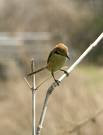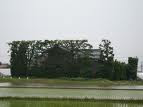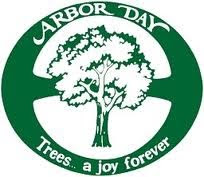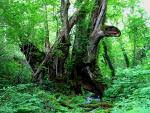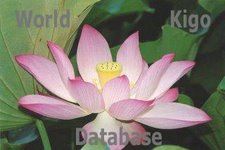[ . BACK to WORLDKIGO TOP . ]
Enoshima, see below
:::::::::::::::::::::::::::::::::::::::::::::::::::::::::::::::::::::::::::::::::::::::::::::::::::
Kamakura 鎌倉
***** Location: Japan
***** Season: Non-seasonal Topic
***** Category: Humanity
The Bronze Statue of Dai-Boutsu, 1863. by Felice Beato
*****************************
Explanation


Surrounded by mountains on three sides and the open water of Sagami Bay on the fourth, Kamakura is a natural fortress. During the Heian period it was the chief city of the Kantō region, and from the 12th through 14th centuries the Minamoto shoguns ruled Japan from here under what is known as the
Kamakura Shogunate (Kamakura Jidai, 鎌倉時代 1185–1333).
Kamakura is now mainly known for its temples and shrines. Kōtoku-in, with the monumental outdoor bronze statue of Amida Buddha, the most famous of these. A 15th Century tsunami destroyed the temple that once housed the Great Buddha, but the statue survived and has remained outdoors ever since.
Magnificent Zen temples like Kencho-ji and Engaku-ji; the Tokei-ji (a nunnery that was a refuge for women who wanted to divorce their husbands); the Tsurugaoka Hachiman Shrine; the Hase-dera, an ancient Kannon temple; the graves of Minamoto no Yoritomo and Hōjō Masako; and the Kamakura-gu where Prince Morinaga was executed, top the list of Kamakura's most famous historical and religious sites.
Kamakura has a beach which, in combination with the temples and the proximity to Tokyo, makes it a popular tourist destination. The city is well-provided with restaurants and other tourist-oriented amenities.
© More in the WIKIPEDIA !
:::::::::::::::::::::::::::::::::::::::::::::::::::::::::::::::::::::::::::::::::::::::::::::::::::::
Fujiwara no Kamatari (藤原釜足)
. The origins of the name Kamakura
The SICKLE (kama 鎌) and Haiku
:::::::::::::::::::::::::::::::::::::::::::::::::::::::::::::::::::::::::::::::::::::::::::::::::::::
Religious people love nature. Kamakuraites love flowers. No matter when you visit Kamakura, flowers are always with you. Many temples are famous for certain flowers.
(See haiku below.)
There is much to be said about the atmosphere of Kamakura and its attraction to haiku poets. I will try to add more later.
Gabi Greve
.......................................................................
Saint Nichiren 日蓮 and Kamakura
Kamakura Kaido 鎌倉街道
Kamakura Kaidō, Kamakura Highway or Highways during the Kamakura Period
:::::::::::::::::::::::::::::::::::::::::::::::::::::::::::::::::::::::::::::::::::::::::::::::::::::
. Famous Places and Powerspots of Edo 江戸 .

Kanda Kamakurachoo 神田鎌倉町
"Kamakura Village" in Kanda, Chiyoda ward
Kamakuragashi 鎌倉河岸 ー 鎌倉川岸
Kamakura riverbank, Kamakura waterfront
At the beginning of the Edo period, when the town was just re-structured by Tokugawa Ieyasu, a lot of construction wood and stones came via the Kamakura region (Sagami no kuni 相模国), with workers coming from Kamakura to heop unloaded at Kamakuragashi. The tradespeople built their homes nearby, soon called Kamakura village. In a map of 1657, it is mentioned as 「かまくら丁」.
Ieyasu also had the Koora ke 甲良家 Kora family from Omi settle here . The head of the Kora family was a master carpenter (daitooryoo 大棟梁) and helped build Edo castle, Senso-Ji and other famous temples, even the 日光東照宮 Nikko Toshogu shrine.

There are some legends alive in the village.
御宿稲荷神社 Mishuku Inari Jinja
浦安稲荷神社 Urayasu Inari Jinja
出世不動尊 Shusse Fudo
家康が関東の新領国を視察した際に、先発隊として来ていた家臣の家に宿をとりました。のちにその庭の祠が御宿稲荷として信仰されるようになり、幕府より家康の足跡を記念して社地を寄進されました。
昔、Shioiri 潮入りの葦原 (Ashihara)だったこのあたりで、漁業を営む人々が篤(あつ)い信仰を寄せていた「浦安稲荷神社」も、かつてはこの町にありました。この祠は、天保(てんぽう)十四年(1843年)に遷座(せんざ)され、現在は神田明神の境内にあります。
「出世不動尊」は、一橋(ひとつばし)徳川家の表鬼門除(おもてきもんよ)けとして祀(まつ)られていたといわれています。本尊は、平安時代の僧智証大師(ちしょうだいし)の作と伝えられています。不動尊前の「出世不動通り」は、当時毎月二十七日に縁日が開かれ、たいへんな盛況だったようです。
now 内神田二丁目1番
- source : Chiyoda Ward Tokyo -
One famous store in Kanda Kamakura Village was the sake store
Toshimaya 豊島屋 (としまや)
It begun selling some snacks and a cup of sake to the workers in the evening, thus being the first "Izakaya 居酒屋" pub in Edo.
Soon other yatai 屋台 food and drink stalls came up in many parts of Edo.

Since 1596 in Edo
Toshimaya, the oldest sake store in Tokyo, originated when its founder, 豊島屋十右衛門 Toshimaya Juemon, opened a sake store and tavern in 1596 at Kamakura Waterfront in central Edo (modern day Tokyo). At that time, large-scale renovation work was being carried out on Edo Castle, so people flocked to Kamakura Waterfront, and Toshimaya is said to have prospered enormously.
Furthermore, when Juemon began brewing shirozake (white sake), its reputation spread throughout Edo. Shirozake is a sweet rice liqueur that was popular with women at the time. Indeed, it was from this time that the Japanese custom of offering shirozake on Girls’ Day, the annual event during which people pray for girls’ healthy growth, is said to have begun. As a result, Toshimaya’s shirozake is cited in many novels and traditional Japanese Kabuki plays. Even today, Toshimaya preserves the traditional recipes and makes shirozake once a year.
Nowadays, our sake brewery is located in Higashi-Murayama City in west Tokyo, where sake, shirozake and mirin (sweet cooking sake) are brewed. Our sake, Kinkon (Golden Wedding Anniversary in English), has been awarded numerous gold prizes at the Annual Japan Sake Awards, and is used as the sacred sake at the famous Meiji Jingu Shrine as well as Kanda Myojin Shrine. Kinkon is skillfully produced by our brewers and, as one of Tokyo’s representative sakes, it brings value to many of our customers.
- source : toshimaya.co.jp -
. Edo - Kanda 神田 Kanda district .
.......................................................................
Saitama
Kami-Kumagaya Station (上熊谷駅 Kami-Kumagaya-eki) is a railway station on the Chichibu Main Line in Kumagaya, Saitama, Japan, operated by the private railway operator Chichibu Railway.
Kami-Kumagawa Station opened on 1 April 1933 as Kamakura-machi Station (鎌倉町駅).
It was renamed Kami-Kumagaya from 1 July 1933.
- - - More in the WIKIPEDIA !
:::::::::::::::::::::::::::::::::::::::::::::::::::::::::::::::::::::::::::::::::::::::::::::::::::::
. Takahama Kyoshi and Kamakura
鎌倉の古き宿屋の松飾り
Kamakura no furuki yadoya no matsukazari
these pine decorations
at the old inns
of Kamakura
Kyoshi, 1949

. WKD : kadomatsu 門松 "pine at the entrance".
:::::::::::::::::::::::::::::::::::::::::::::::::::::::::::::::::::::::::::::::::::::::::::::::::::::

Susumsu Takiguchi about Hoshino Tsubaki sensei
Kamakura wa nami no oto yori ake yasushi
in Kamakura
dawn breaks from the sound of waves,
getting earlier and earlier
Kamakura is where Kyoshi lived and worked most of his life after leaving his hometown, Matsuyama. Tsubaki and her son, Takashi, have founded a haiku
museum there in honor of Kyoshi and of Tsubaki's mother, Tatsuko. The museum
has become a center of haiku studies and composition. As the haiku indicates, residents of this coastal town are always conscious of the sea.
Kyoshi founded a new haiku magazine, Tamamo, and gave it to Tatsuko to run.
Now it is run by Tsubaki and Takashi.
More about: Hoshino Tsubaki and
Takahama Kyoshi and Kamakura
鎌倉虚子立子記念館
Kamakura Haiku by Kyoshi
鎌倉は古き都や注連の内
鎌倉を驚かしたる余寒あり
早春の鎌倉山の椿かな
鎌倉に實朝忌あり美しき
鎌倉の山に響きて花火かな
鎌倉や牡丹の根に蟹遊ぶ
鎌倉の草庵春の嵐かな
鎌倉に春の雪降る訃いたる
Haiku by Kyoshi about Kamakura

His Grave at Jufukuji 寿福寺, Kamakura
:::::::::::::::::::::::::::::::::::::::::::::::::::::::::::::::::::::::::::::::::::::::::::::::::::

Tsukioka Yoshitoshi - 東海道由比ヶ浜
Yuigahama 由比ガ浜 Yuigahama Beach
"beach at Yui"
. . . CLICK here for Photos !
短夜や足跡浅き由比が濱
mijikayo ya ashiato asaki Yuigahama
short night -
shallow footprints
at Yuigahama
Yosa Buson
. Short Night and HAIKU
:::::::::::::::::::::::::::::::::::::::::::::::::::::::::::::::::::::::::::::::::::::::::::::::::::
- - - - - Enoshima 江ノ島
Benzaiten, the goddess of music and entertainment, is enshrined on the island.
© More in the WIKIPEDIA !

江ノ島や傘さしかけし夏肴
Enoshima ya kasa sashikakeshi natsu sakana
Enoshima island !
all use a parasol -
fish in summer
Takebe Soochoo 建部巣兆
1761-1814, painter and poet, Takebe Socho
. FISH in summer - SAIJIKI
. Benten, Benzaiten 弁天 弁財天



Enoshima - by Katsushika Hokusai

Travelers at Enoshima - by Kitagawa Utamaro
*****************************
Worldwide use

Obama revisits Kamakura's Great Buddha
November 15, 2010
*****************************
Things found on the way
Kamakura Sayumi, a Haiku Poet
Sayumi Kamakura 鎌倉佐弓

*****************************
HAIKU
Issa in Kamakura
蛤や在鎌倉の雁鴎
hamaguri ya zai-kamakura no kari kamome
O clams
meet the geese and gulls
of Greater Kamakura!
春雨やかまくら雀何となく
harusame ya kamakura suzume nan to naku
in spring rain
Kamakura's sparrow's...
how they sing!
かまくらや昔どなたの千代椿
kamakura ya mukashi donata no chiyo tsubaki
Kamakura--
who planted this camellia
in olden times?
かまくらや犬にも一ッ御なん餅
kamakura ya inu ni mo hitotsu o-nan mochi
in Kamakura
one for the dog...
sacred rice cakes
This haiku refers to a celebration held on the 12th day of Ninth Month. Rice cakes in bean jam are offered to Nichiren, the founder of one of Japan's major Buddhist sects. These offerings commemorate a time when an old woman fed Nichiren when he was in exile.
しぐるるや在鎌倉雁かもめ
shigururu ya imasu kamakura kari kamome
winter rain falls
on Kamakura's residents...
geeses, gulls
鎌倉や今はかがしの屋敷守
Kamakura ya ima wa kagashi no yashiki mori
Kamakura--
these days scarecrows
are the gatekeepers
Kobayashi Issa / Tr. David Lanoue

栄華は昔、今年豊作
the prosperity is the past
and the best harvest this year
© Haiga and Renku : Nakamura Sakuo
:::::::::::::::::::::::::::::::::::::::::::::::::::::::::::::::::::::::::::::::::::::::::::::::::::::
Kamakura ya Zen to haiku ni ume kaori
plum blossoms
adorning Zen and haiku
at Kamakura asile
Masaaki Oka
Plum-view haiku walk to Tokeiji Temple (woman-escaping-to-Temple) in Kamakura.
More Kamakura Haiku, 2005
Moderator: Catherine Urquhart
:::::::::::::::::::::::::::::::::::::::::::::::::::::::::::::::::::::::::::::::::::::::::::::::::::::
Gabi Greve:
I lived in Kamakura from 1977 till 1995.
I was member of a local haiku group for many years.

鎌倉や観光客の夏の陣
Kamakura ya kankookyaku no natsu no jin
Oh Kamakura !
the "Battle of Summer"
of the tourists
"FACTS : Osaka natsu no jin" (the Summer battle of Osaka)
Every year, there were more noisy visitors coming to town to visit temples and shrines, with roads crowded by smelly tourist buses, the beach filled with people (and waste and leftovers next morning)... after about 15 years it was time for us to move on to the quiet mountains of Okayama !
a different temple
for each season <>
flowers of Kamakura
Flower Calendar in Kamakura
*****************************
Related words
. Asaina Kiridoshi Pass 朝夷奈切通し .
and Asahina Saburo Yoshihide - 朝比奈三郎義秀
Hoshino Tsubaki 星野 椿
Granddaughter of Takahama Kyoshi
. Tsurugaoka Hachimangu
鶴岡八幡宮 and Hachiman Festivals
. Kamakurabori 鎌倉彫り
Kamakura Laquerware and Daruma san
Amulets from temples in Kamakura :
. Folk Toys from Kanagawa .
.................................................................................
my giant old friend
has taken a final fall ...
spring storm
. The Old Gingko Tree at Hachimangu
uprooted in March, 2010
:::::::::::::::::::::::::::::::::::::::::::::::::::::::::::::::::::::::::::::::::::::::::::::::::::::::::::::::::::::::::::
[ . BACK to DARUMA MUSEUM TOP . ]
[ . BACK to WORLDKIGO . TOP . ]
:::::::::::::::::::::::::::::::::::::::::::::::::::::::::::::::::::::::::::::::::::::::::::::::::::::::::::::::::::::::::::

















